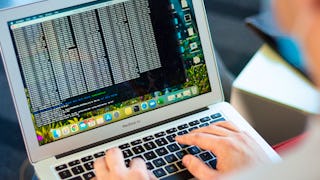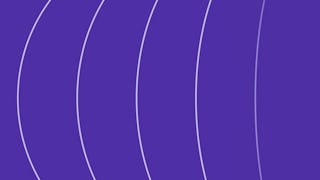Each successful student in this course will become familiar with hypervisors, virtualization terms, infrastructure considerations, and appropriate use cases. While designed to give an overview of today’s Virtualization technologies and methods, students in the course will gain enough practical knowledge to begin deploying various hypervisors and virtual machine environments using current industry standard platforms.

Enjoy unlimited growth with a year of Coursera Plus for $199 (regularly $399). Save now.

Operating System Virtualization - Master's
This course is part of multiple programs.

Instructor: Philip Matuszak
1,883 already enrolled
Included with
(15 reviews)
Recommended experience
Skills you'll gain
Details to know

Add to your LinkedIn profile
43 assignments
See how employees at top companies are mastering in-demand skills

Build your subject-matter expertise
- Learn new concepts from industry experts
- Gain a foundational understanding of a subject or tool
- Develop job-relevant skills with hands-on projects
- Earn a shareable career certificate

There are 9 modules in this course
Welcome to Operating System Virtualization! Each successful student in this course will become familiar with hypervisors, virtualization terms, infrastructure considerations, and appropriate use cases. While designed to give an overview of today’s Virtualization technologies and methods, students in the course will gain enough practical knowledge to begin deploying various hypervisors and virtual machine environments using current industry standard platforms. Module one gives a brief origin of virtualization, the modern hypervisor, types of virtualization, and types of today’s hypervisors.
What's included
11 videos7 readings5 assignments1 discussion prompt
Module two discusses hosting types and scenarios for creating virtualization platforms and basic hardware concepts for virtualization hosts and infrastructure.
What's included
10 videos7 readings5 assignments
Module three outlines and examines the VM creation process, resource allocation, and procedures used after a guest OS has been installed.
What's included
10 videos8 readings6 assignments
Module four highlights' aspects of hypervisor administration as well as concepts related to resource overcommitment.
What's included
8 videos6 readings5 assignments
Module five defines both physical and virtual networking concepts as they relate to both host hardware and virtual machine hardware.
What's included
10 videos7 readings6 assignments
Module six defines local and shared storage concepts, as well as shared storage devices, networks, and hypervisor access to storage.
What's included
10 videos7 readings5 assignments
Module seven gives learners an introduction to the clustering of hypervisors. Topics include how hosts are clustered as well as features available because of clustering.
What's included
8 videos7 readings5 assignments
Module 8 introduces the concept of end-user computing and how virtualization technology can be used to deliver secure on-demand desktops to end users.
What's included
9 videos7 readings5 assignments
This module contains the summative course assessment that has been designed to evaluate your understanding of the course material and assess your ability to apply the knowledge you have acquired throughout the course.
What's included
1 assignment
Earn a career certificate
Add this credential to your LinkedIn profile, resume, or CV. Share it on social media and in your performance review.
Build toward a degree
This course is part of the following degree program(s) offered by Illinois Tech. If you are admitted and enroll, your completed coursework may count toward your degree learning and your progress can transfer with you.¹
Instructor

Offered by
Explore more from Cloud Computing
 Status: Preview
Status: PreviewIllinois Tech

Pearson
 Status: Preview
Status: Preview Status: Free Trial
Status: Free Trial
Why people choose Coursera for their career





Open new doors with Coursera Plus
Unlimited access to 10,000+ world-class courses, hands-on projects, and job-ready certificate programs - all included in your subscription
Advance your career with an online degree
Earn a degree from world-class universities - 100% online
Join over 3,400 global companies that choose Coursera for Business
Upskill your employees to excel in the digital economy
Frequently asked questions
To access the course materials, assignments and to earn a Certificate, you will need to purchase the Certificate experience when you enroll in a course. You can try a Free Trial instead, or apply for Financial Aid. The course may offer 'Full Course, No Certificate' instead. This option lets you see all course materials, submit required assessments, and get a final grade. This also means that you will not be able to purchase a Certificate experience.
When you enroll in the course, you get access to all of the courses in the Specialization, and you earn a certificate when you complete the work. Your electronic Certificate will be added to your Accomplishments page - from there, you can print your Certificate or add it to your LinkedIn profile.
Yes. In select learning programs, you can apply for financial aid or a scholarship if you can’t afford the enrollment fee. If fin aid or scholarship is available for your learning program selection, you’ll find a link to apply on the description page.
More questions
Financial aid available,

